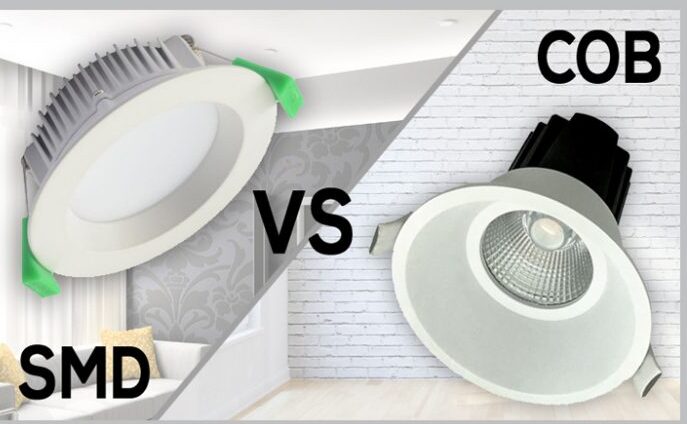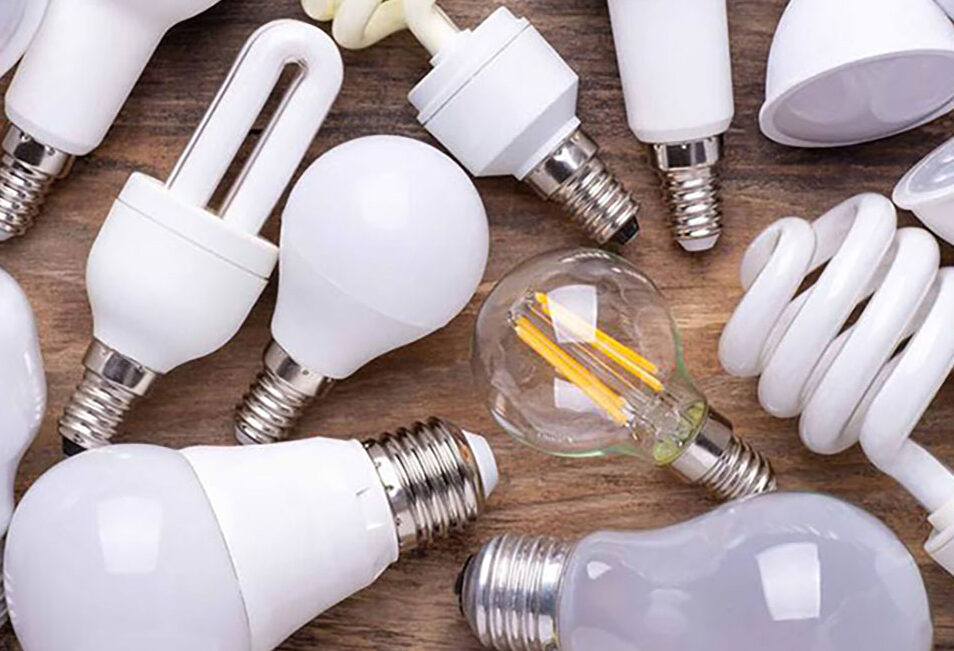The difference between LED, COB and SMD lamps
The advent of LED technology revolutionized the light bulb industry. The rapid advancement of technology and innovation in the family of these lights led to the creation of different COB and SMD lamps and improved lighting and illumination in every way. The various lamp production technologies are divided into three general categories: incandescent (incandescent) lamps, gas lamps (discharge), and light emitting diodes, each of which has subsets.Prototypes of LEDs were made in the 60’s and have evolved over the years to modern LED bulbs (third generation) This technology has become very widespread and is widely used in industries even outside of space lighting. Takes. For example, it is widely used in toy structures, traffic equipment, automotive industries and many other places. LED stands for LIGHT-EMITTING DIODE, which actually means diodes that emit light by connecting to direct current. These diodes were very expensive in the beginning, but over time, the cost of making LEDs was greatly reduced by using the flattening process in the production of semiconductor chips for emitting diodes. Some of the great features of this generation of lights are:

Modern Homes Demand Smart Technology
Long service life: Today’s LED lights last an average of about 50,000 hours.
Energy efficiency: Very high efficiency against low energy consumption.
Environmental harmony: This generation of lights is less harmful to the environment than other light bulbs.
No heat and UV radiation: LED technology produces very little heat and can also be used to illuminate works of art due to the lack of ultraviolet radiation.
Flexibility in design: Light emitting diodes can be used in different ways in the design of lights due to their very small size.
The LEDs light up immediately after the current is turned on, and also unlike some older light bulbs, the number of light bulbs on and off has no effect on failure.
It should be noted that SMD and COB lamps are both a subset of the LED family that are optimized in terms of structure and features.
SMD LED lamp
SMD LED lamps are one of the types of LED family. This word stands for SURFACE MOUNTED DEVICE. LED chips in this technology are permanently placed on the electrical circuit with the surface mounting method (SMT). In this method, there is no need to drill a hole in the board. The advantages of installing an LED flatbed include the following:
Reduce the volume of the piece due to less use of tin.
Reduction of errors in the production process and increase of assembly quality due to less manpower intervention.

1- DIP parts are an older technology than SMD part in which the board is perforated and the part is soldered to it from below.
2. POWER LEDs are part of the SMD family because they have a similar soldering method.
COB LED lamp
One of the new advances in LED technology is called the COB chip, which looks like a light screen when turned on. This product is an abbreviation of the words CHIPS ON BOARD. This type of lamp is made of a chip that is mounted directly on the circuit. This chip has only one circuit and two contacts. This type of light source has a low thermal efficiency and the amount of light (light flux) relative to power consumption. Some manufacturers have made examples of it that can produce 250 Lm / w for 20 mA of light current. The benefits of COB include the following:

It has more focused and controllable light.
By using lenses in the structure of COB lamps, more light emission can be created. Therefore, in spaces with higher ceiling heights, the use of this family of LEDs is more recommended.
Has better heat resistance.
The difference between SMD and COB lights
These two technologies, due to the differences in their technical structure due to the production process, have various differences both in terms of lighting production and in terms of appearance specifications.

SMD chips can eventually accommodate three diodes, while a COB chip has nine or more diodes on each chip.
COB light production efficiency is higher than SMD.
Due to the difference in the structure of the two, COB has less glare and also has better and more uniform light quality. But SMDs are brighter.
COB lights emit more light and SMD lights emit more light.
The COB lamp has a reflector in its structure that controls the emission of light rays and emits focused light.
SMD technology produces between 50 and 100 lumens per watt of light, while COB produces at least 80 lumens of light per watt.
In general, SMD production costs are higher than COB.
COB LED lamps are typically used in lamps with a power of 50 watts, while SMD lamps also make lamps with a power of up to 1000 watts.
The CIR color rendering index in SMD lamps is between 70-80, while the same index in COB lamps is above 90.

In terms of appearance, lights that use SMD lamps have a diffuser that prevents the internal components of the lamp from being seen, but in COB lights inside the lamp and LEDs. Also, SMD lights are less thick than COB lights.
As mentioned, due to the spread of light in SMD lights, this family is mostly used for most residential spaces such as the living room, which requires less shade, and COB lights due to local light for spaces such as coffee shops, offices. And parts like kitchen counters are used.




